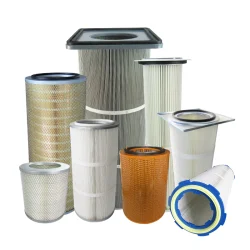Features and aspects of cartridge filters
2024-01-26
Cartridge filters are a type of filtration equipment commonly used to remove impurities, particles, or contaminants from liquids or gases. These filters utilize cylindrical filter elements, known as cartridges, made from various materials with different pore sizes. Cartridge filters find applications in diverse industries, including water treatment, pharmaceuticals, food and beverage, chemical processing, and more. Here are key features and aspects of cartridge filters:
1. Design and Structure:
- Cartridge Material: Cartridges are typically made of materials such as paper, polyester, polypropylene, or other synthetic materials. The material and construction are chosen based on the specific filtration requirements.
- Pleated or Depth Filtration: Cartridge filters may have a pleated design or utilize depth filtration. Pleated cartridges offer a larger surface area for filtration, while depth cartridges trap particles within the filter matrix.
2. Micron Ratings:
- Defined Pore Sizes: Cartridge filters come in various micron ratings, indicating the size of particles they can effectively capture. The micron rating is a measure of the filter's ability to retain particles of a specific size.
3. Applications:
- Water Treatment: Cartridge filters are widely used in water treatment systems to remove sediment, dirt, and other impurities from drinking water, industrial process water, and wastewater.
- Pharmaceuticals: In the pharmaceutical industry, cartridge filters are employed for the sterile filtration of liquids and gases, ensuring product purity.
- Food and Beverage: Cartridge filters are used to clarify and filter liquids in the food and beverage industry, removing particles and contaminants to meet quality standards.
- Chemical Processing: Cartridge filters play a role in chemical manufacturing processes, where the removal of impurities is essential for product quality.
- Automotive: In automotive applications, cartridge filters are used in oil, fuel, and air filtration systems to trap particles and contaminants.
4. Installation and Replacement:
- Easy Installation: Cartridge filters are typically easy to install and replace. They are often designed for quick and straightforward replacement during routine maintenance.
- Single-Use or Reusable: Some cartridge filters are disposable and meant for single-use, while others can be cleaned and reused multiple times.
5. Filtration Efficiency:
- High Filtration Efficiency: Cartridge filters offer high filtration efficiency, capturing particles of the specified size and preventing them from passing through the filter media.
6. Configuration:
- Single and Multi-Cartridge Housings: Cartridge filters can be used in single-cartridge housings or multi-cartridge housings, depending on the flow rate and filtration requirements of the system.
7. Variety of End Caps:
- End Cap Options: Cartridges may have different end cap configurations, such as DOE (Double Open End), SOE (Single Open End), or other variations, which affect how they are installed in filter housings.
8. Specialized Cartridges:
- Activated Carbon Cartridges: Some cartridge filters are impregnated with activated carbon to adsorb impurities, odors, or chemicals from the fluid being filtered.
- Membrane Cartridges: Membrane cartridges utilize membrane filtration technology for fine particle removal in applications where high filtration precision is required.
9. Pre-filtration and Final Filtration:
- Pre-filtration: Cartridge filters are often used as pre-filters to remove larger particles, protecting downstream equipment or finer filters.
- Final Filtration: Cartridge filters can also serve as the final stage of filtration to ensure the quality of the processed fluid.
10. Differential Pressure Monitoring:
- Monitoring System: In some applications, cartridge filter housings are equipped with differential pressure gauges to monitor the pressure drop across the filter. This helps indicate when the filter needs replacement.
When selecting a cartridge filter for a specific application, factors such as particle size, flow rate, filtration efficiency, and compatibility with the fluid being filtered should be considered. Routine maintenance, including regular replacement or cleaning, is essential to ensure optimal performance and prevent any compromise in filtration efficiency.



